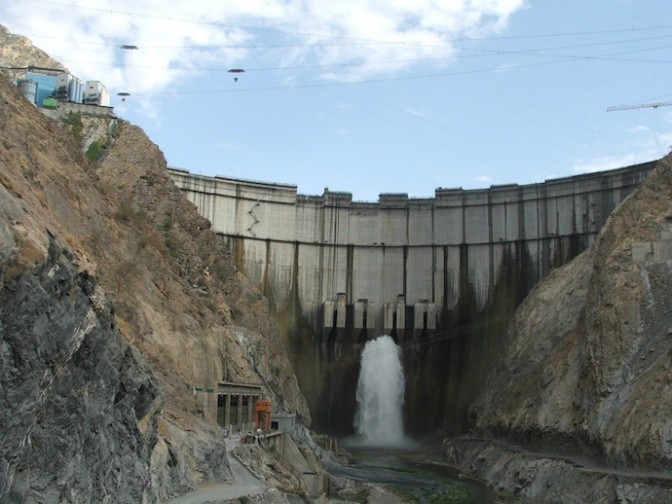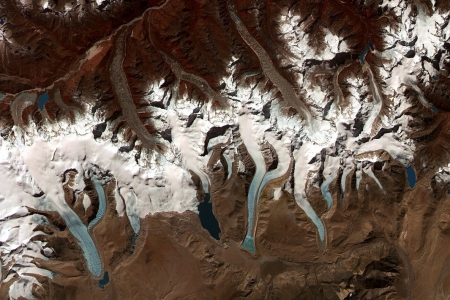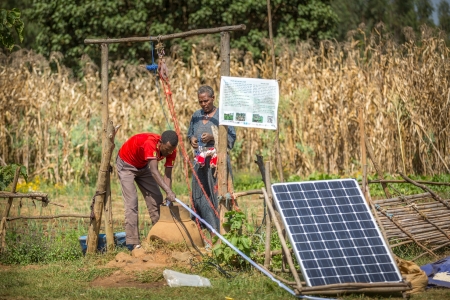This blog post is featured alongside responses to the question "Should we build more large dams" as part of a series of responses for World Water Day 2014.
Let’s celebrate World Water Day by recognising that most of the trillions of dollars spent on building large dams round the world in the past half century or so have been a waste of money. Many people may have suspected as much, but now there is peer-reviewed research to back it up.
These icons of modernism and taming nature for the good of man have been bad deals. And the bigger the badder. Which is not good news for the 4800-megawatt Inga 3 dam on the Congo river in central Africa, which was approved for a grant by the directors of the World Bank this week.
According to ground-breaking new research, this conclusion does not depend on how you cost the environmental or social downsides of large dams – which will always be a matter of controversy. The dams, it seems, have failed on their own terms. They do not deliver what their enthusiastic promoters promise. They come in over-budget and usually years behind schedule. As a result, as many as half of them have a negative economic return. The money would have been better spent elsewhere.
Oxford geographer Atif Ansar, with business and statistics colleagues, analysed 245 representative large dams -- including 26 mega-dams over 150 metres high – that have been built over the past eight decades at a cost of more than $300 billion. Most were hydro-dams.
“We find,” they conclude in a startling new paper in the journal Energy Policy, “that even before accounting for negative impacts on human society and environment, the actual construction costs of large dams are too high to yield a positive return.”
They blame a mixture of over-optimism among politicians and sometimes deliberate deception by people seeking contracts. The findings could – or at any rate, should -- change thinking round the world on these, the biggest of all infrastructure projects.
The researchers asked a simple question: “Should we build more large dams?” To answer it, they decided not to look at the promises made by the engineers and consultants pitching for contracts, or the politicians anxious to benefit their countries and delight their voters. They decided instead to learn some lessons from history by checking whether the outcomes past dams lived up to the billing.
Economists call this analysis “reference class forecasting”. They reason that if the builders of large dams historically fail to deliver on time and on budget, then we can reasonably expect history to repeat itself. It may sound like common sense, but few proponents of big dams are inclined to learn the lessons, the authors say. They prefer the “promise of prosperity” to the messier truth.
Reference class forecasting is not new. The basic methodology won a Nobel prize for economics as long ago as 2002. Though, revealingly perhaps, the recipient was not an economist but a behavioural psychologist, Daniel Kahneman of Princeton. But the technique has never been used before to assess large dams.
Three-quarters of large dams looked at in the study came in over budget – on average 96 per cent over. One in ten cost three times more. The Visegrad dam, built by Yugoslavia and now in Bosnia, ended up a hundred times over budget -- and still its reservoir leaks into the surrounding limestone rocks.
These cost over-runs wrecked the dams’ economics. On average, when the dam projects were proposed, governments were promised a 40 per cent return on their investment. But almost half the dams surveyed came in so far over budget that they instead became economic loss-makers. And that, the authors note dryly, was before checking whether the promised benefits actually accrued.
“We find overwhelming evidence that budgets are systematically biased below actual costs,” the authors conclude. Worse still, the bigger the dam the bigger the deficit. An average dam took 8.6 years to build, but bigger dams took longer. And the longer it took, the more costs ran out of control.
The results show not one-off failings but a major systematic problem that reveals most large dam projects as economic failures. And there is no evidence that decision-makers have learned the lessons. Recent dams have been completed just as late and just as over-budget as their predecessors.
So there is no earthly reason to suppose that today’s generation of dams will turn out different. Whether it is the Belo Monte on the Xingu, an Amazon tributary in Brazil; the Gibe III on the River Omo in Ethiopia; the Myitsone dam on the Irrawaddy river in Myanmar; or the many barriers on the upper Yangtze in China -- expect them to arrive late and to break the bank.
The authors single out the $8.5 billion Diamer-Bhasha dam on the River Indus in northern Pakistan as an especially bad prospect. It was designed as a hydro-dam. But when construction began in 2011, months after catastrophic floods inundated a fifth of that country, politicians resold it to voters as able to prevent a repetition of the flood. It is headed for a 44 per cent cost over-run that would overwhelm its promised economic benefit, say the authors.
Most political leaders will find this pill hard to swallow. Many still side with the late Ethiopian prime minister Menes Zenawi, who said of his latest hydro-dam project in 2011: “We cannot afford not to have Gibe III... We want our people to have a modern life.”
But if modern life means taking a hard-headed approach to economics, then the bottom line is that hydropower dams simply do not deliver enough power to justify the cost of building them. They empty exchequers and impoverish nations.
The study builds on a growing body of evidence that big infrastructure projects of all sorts are subject to the same problem. The much-promised economies of scale usually prove illusory, while diseconomies of scale are all too real. Railways on average come in 45 per cent over budget and bridges 34 per cent, but dams – as the biggest of all – come in at 96 per cent over.
The problems range from engineering hubris and corruption to failures of project management, economic pitfalls like inflation and currency fluctuations, fraudulent science, unexpected geology, congenital over-confidence – and democracy.
A final disturbing truth uncovered by the study is that dams do worse in democratic countries. “While democracies do not take longer to build large dams than autocracies, democracies appear to be more optimistic,” say the authors. In other words, politicians on the stump love promising big dams and their voters love being promised them. Dams are a poisoned chalice. They corrupt. And the biggest ones corrupt most of all.




/index.jpg?itok=EzuBHOXY&c=feafd7f5ab7d60c363652d23929d0aee)











Comments
The Three Gorges Dam project in China is alleged to have displaced over 1.5 million people. Ethiopia’s Grand Renaissance dam on the Blue Nile River risks international backlash. These 2 dams are good example of controversies and dams
Add new comment